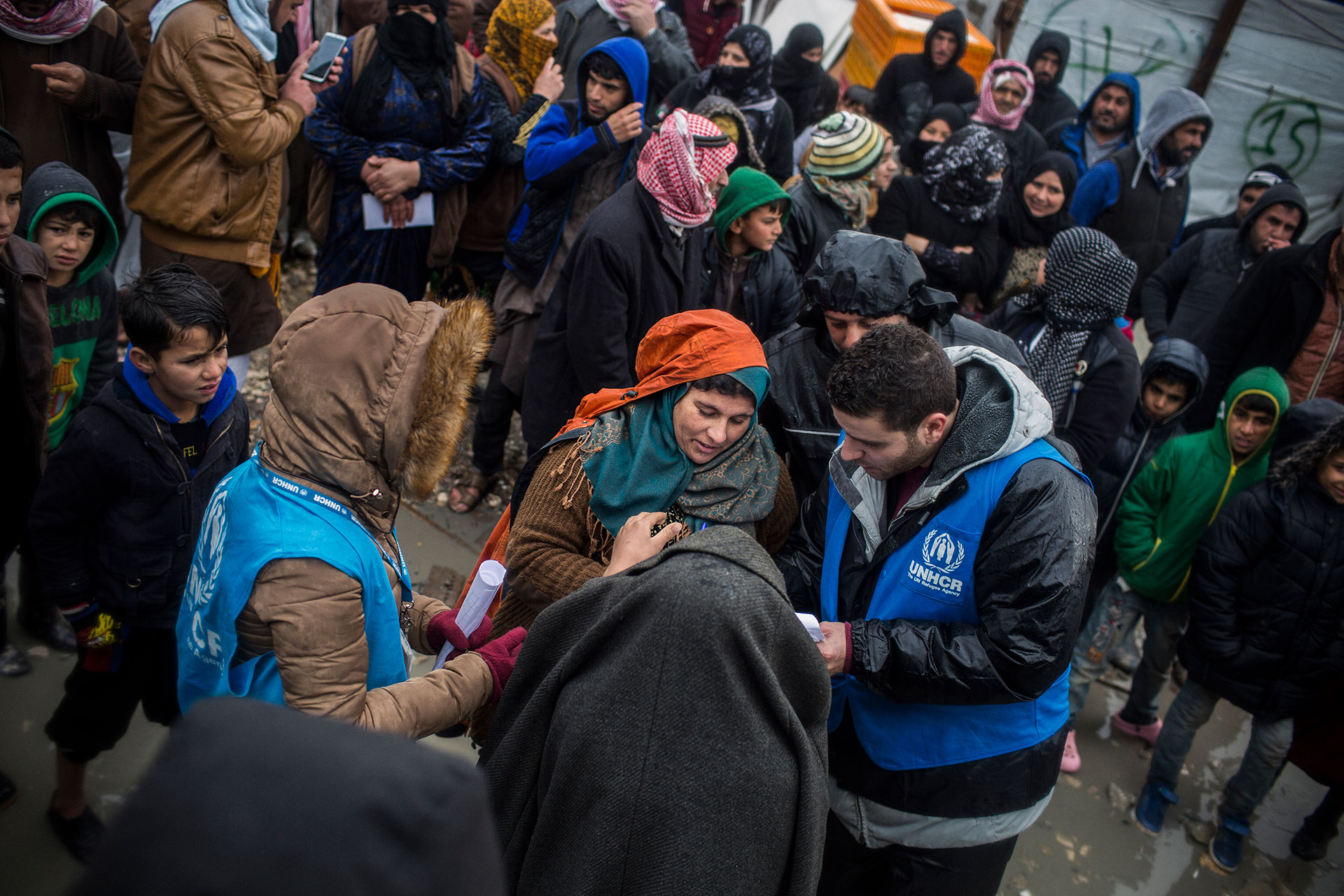
UNHCR staff distribute mattresses, blankets and other core relief items to those worst-affected by Storm Norma at Bar Elias informal settlement in central Lebanon.
Today, more people than ever live in a country other than the one in which they were born. According to the IOM World Migration Report 2022, as of 2021 the number of international migrants was estimated to be almost 281 million globally, 9 million more than in 2019. Nearly two thirds were labour migrants. International migrants comprised 3.6 per cent of the global population in 2021.
While many individuals migrate out of choice, many others migrate out of necessity. According to estimates by the UN Refugee Agency, UNHCR, the number of globally forcibly displaced people worldwide was 103 million at the middle of 2022. Of these, 32.5 million were refugees, 53.2 million people were internally displaced, 4.9 million were asylum-seekers, and 5.3 million are other people in need of international protection.
More than seven out of 10 of all the world’s refugees come from just five countries: Syria, Venezuela, Ukraine, Afghanistan and South Sudan.
Türkiye hosts the largest number of refugees, with 3.7 million people, followed by Colombia, Germany, Pakistan and Uganda. More than two thirds of refugees and other people in need of international protection live in countries neighbouring their country of origin.
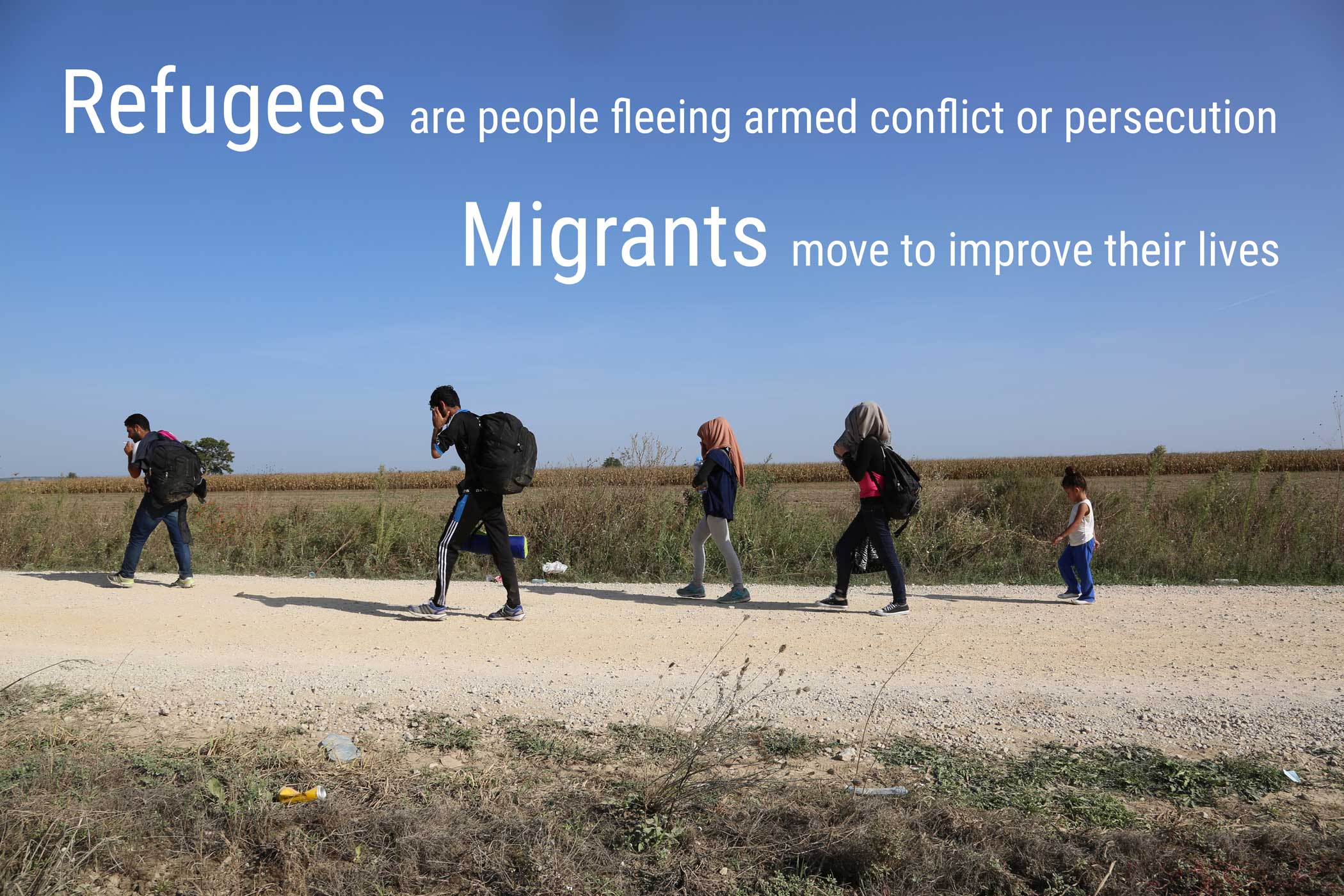
The UN Migration Agency (IOM) defines a migrant as any person who is moving or has moved across an international border or within a State away from his/her habitual place of residence, regardless of the person’s legal status; whether the movement is voluntary or involuntary; what the causes for the movement are; or what the length of the stay is.
The terms 'migrants' and 'refugees' are often used interchangeably but there is a difference between the two.
The 2030 Agenda for Sustainable Development recognizes for the first time the contribution of migration to sustainable development. Eleven out of the 17 Sustainable Development Goals (SDGs) contain targets and indicators relevant to migration or mobility. The Agenda's core principle is to "leave no one behind," including migrants.
Established in 1951, the International Organization for Migration - IOM - is the leading inter-governmental organization in the field of migration. IOM works to ensure the orderly and humane management of migration, to promote international cooperation on migration issues, to assist in the search for practical solutions to migration problems and to provide humanitarian assistance to migrants in need, including refugees and internally displaced people. In 2016, IOM became one of the specialized agencies of the United Nations.
IOM’s Global Migration Data Portal provides timely, comprehensive migration statistics and reliable information about migration data globally.
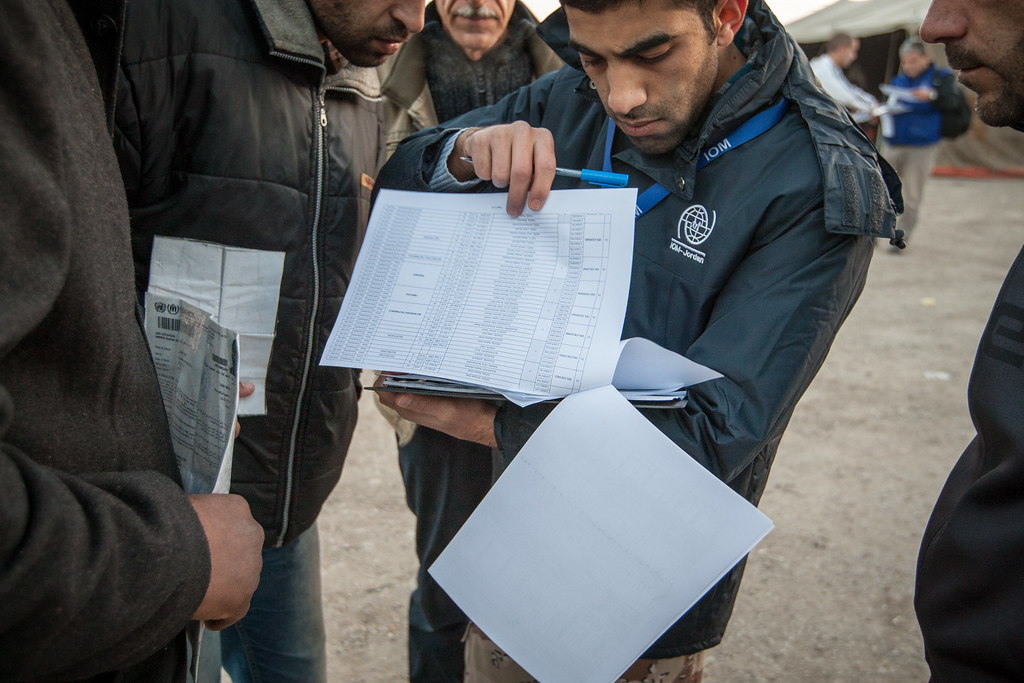
Large-scale movements of refugees and migrants affect all UN Member States and require closer cooperation and responsibility-sharing.
In 2016, UN Member States adopted a set of commitments, known as the New York Declaration for Refugees and Migrants, in which they recognized the need for a comprehensive approach to migration. The Declaration acknowledges the positive contribution of migrants to sustainable and inclusive development, and commits to protecting the safety, dignity and human rights and fundamental freedoms of all migrants, regardless of their migratory status.
Following this, in 2018, UN Member States adopted the Global Compact for Safe, Orderly and Regular Migration at an intergovernmental conference in Morocco. The Global Compact covers diverse issues such as strengthening labour rights for migrant workers, improving migration data as a basis for evidence-based policies, saving lives and establishing international efforts on missing migrants.
International Migrants Day is marked on 18th December.
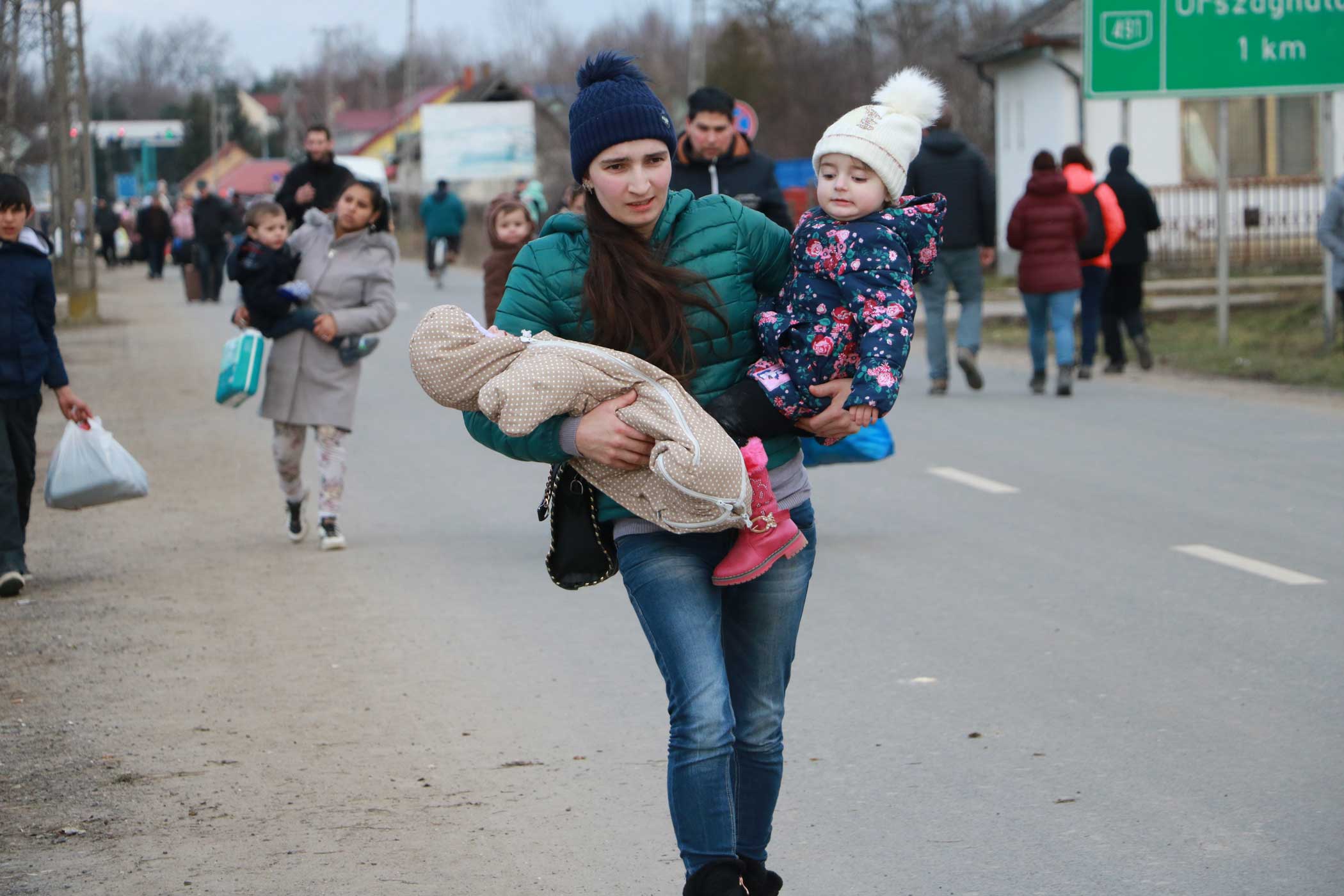
A young Ukrainian mother carries her three-month-old baby and her three-year-old toddler across the Tiszabecs border crossing into Hungary after she fled Ukraine leaving her husband behind.
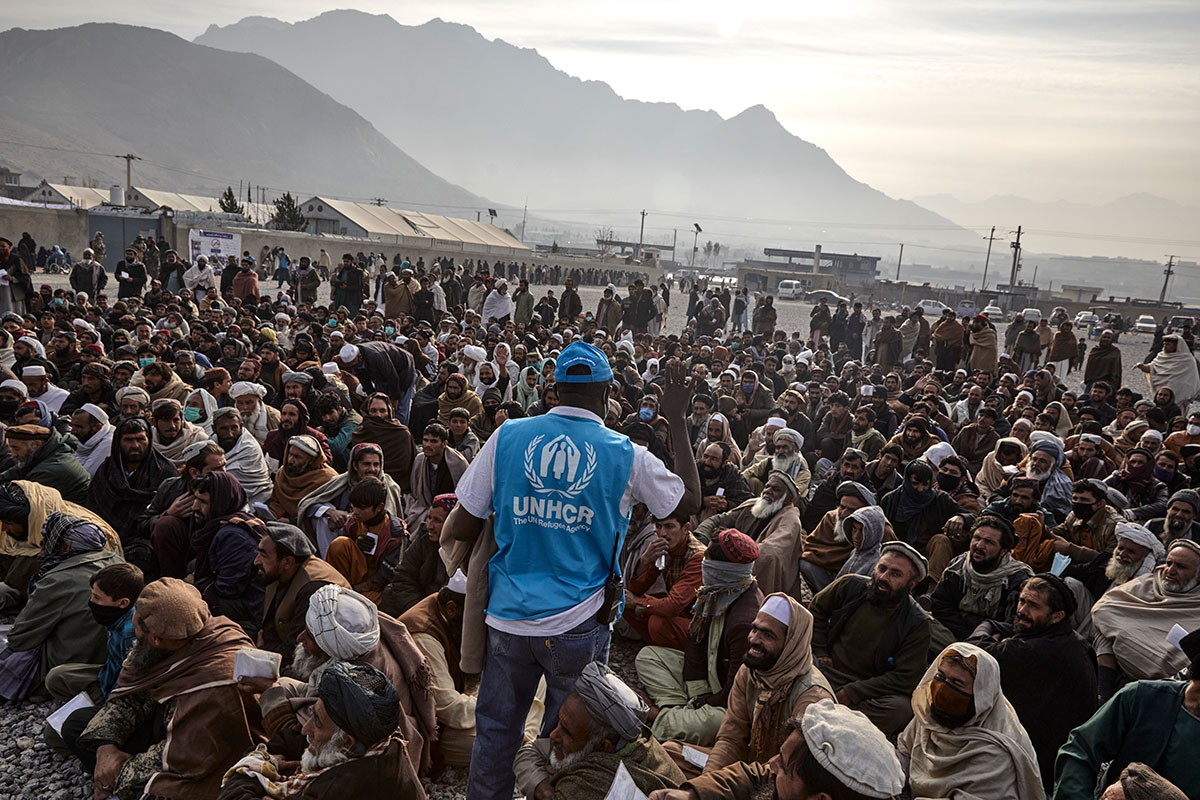
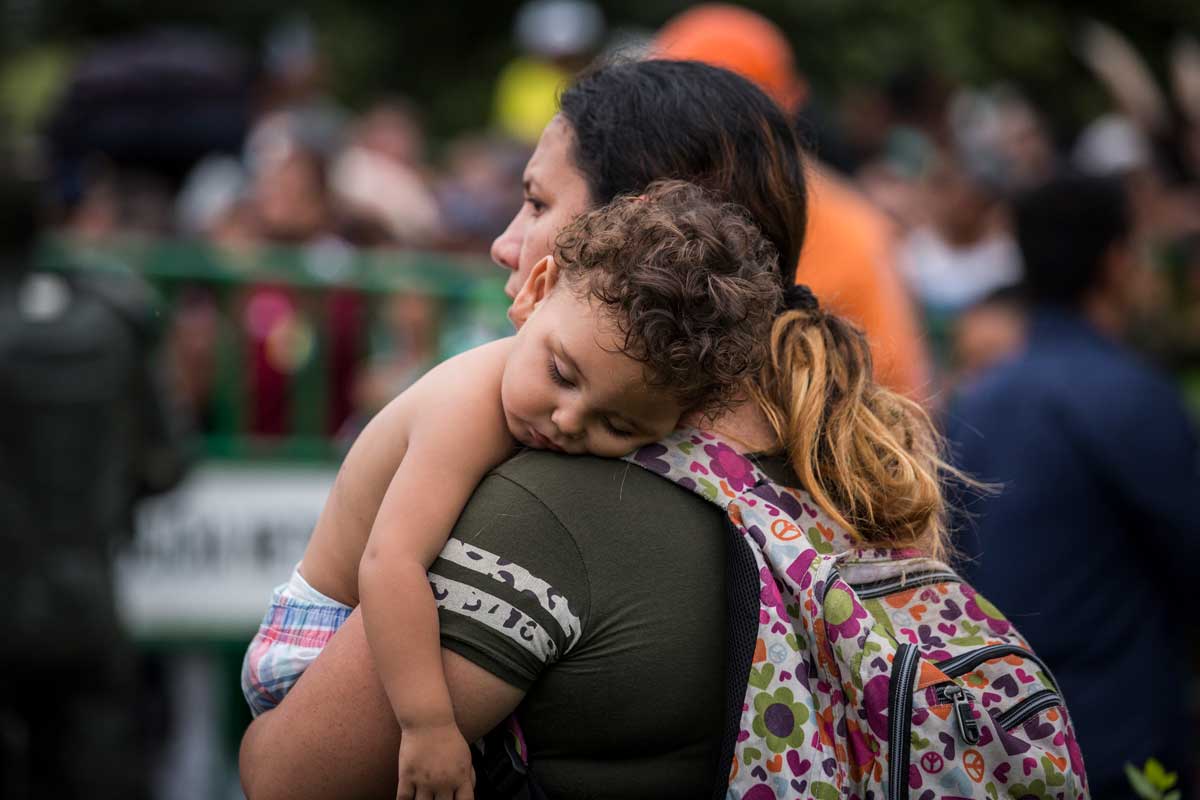
Although most of the estimated 45,000 Venezuelans that cross every day into Colombia return to their country, up to 5,000 of them remain in Colombia or continue their journeys in search of safety and a new life in other Latin American countries such as Ecuador, Peru and Chile.
The right to seek asylum from persecution is enshrined in the Universal Declaration of Human Rights, the cornerstone document of international human rights law.
Refugees are protected under the 1951 Refugee Convention which defines a refugee as someone with a well-founded fear of persecution for reasons of race, religion, nationality, political opinion or membership of a particular social group.
Refugees cannot be returned to a country where their lives would be under threat. This is known as the non-refoulement principle. People who have committed a crime against peace or a war crime are not eligible for refugee status.
Under the Refugee Convention, refugees also have the right to work, education, housing, public relief and assistance, access the courts and among other things the right to move freely within the territory. In turn, refugees are required to abide by the laws of their country of asylum.
An asylum seeker is someone seeking sanctuary in another country and to be recognized as a refugee, they must demonstrate that their fear of persecution in their home country is well-founded.
Internally displaced people are those who have fled their homes for the same reasons as refugees but remain in their own country and they are not protected by international law.
The United Nations High Commissioner for Refugees (UNHCR) was established in 1950 to help Europeans displaced by World War II, with a three-year mandate to complete its work and then disband. The following year, the United Nations Convention relating to the Status of Refugees, the legal document that forms the basis of UNHCR’s work was adopted. The 1951 Refugee Convention has been signed by 146 State parties including Austria, Hungary, Slovakia and Slovenia. UNHCR has been working ever since to help refugees. Its primary purpose is to lead and co-ordinate international action to protect and assist refugees and resolve refugee problems worldwide.
In the 1960s, the decolonization of Africa produced the first of that continent's numerous refugee crises needing UNHCR intervention. Over the following two decades, UNHCR had to help with displacement crises in Asia and Latin America. By the end of the century there were fresh refugee problems in Africa and, turning full circle, new waves of refugees in Europe from the series of wars in the Balkans.
In a world where an estimated 103 million people are forcibly displaced as a result of conflict or persecution, the work of UNHCR is more important than ever.
World Refugee Day is observed annually on 20 June.
On 17 December 2018, the United Nations General Assembly approved the Global Compact on Refugees, a framework for more predictable and equitable responsibility-sharing, recognizing that a sustainable solution to refugee situations cannot be achieved without international cooperation.
The United Nations Relief and Works Agency for Palestine Refugees in the Near East (UNRWA), was mandated by the UN General Assembly in 1949 to provide services to registered Palestine refugees in the Middle East who lost both home and means of livelihood as a result of the 1948 conflict. When the Agency began operations in 1950, it was responding to the needs of about 750,000 Palestine refugees. UNRWA delivers a range of services including primary and secondary education, health care, relief and social services, camp infrastructure and improvement, microfinance, and emergency aid to Palestine refugees, now numbering 5 million, in the Agency’s five mandated areas of operation: the Gaza Strip, West Bank, including East Jerusalem, Jordan, Lebanon and Syria.
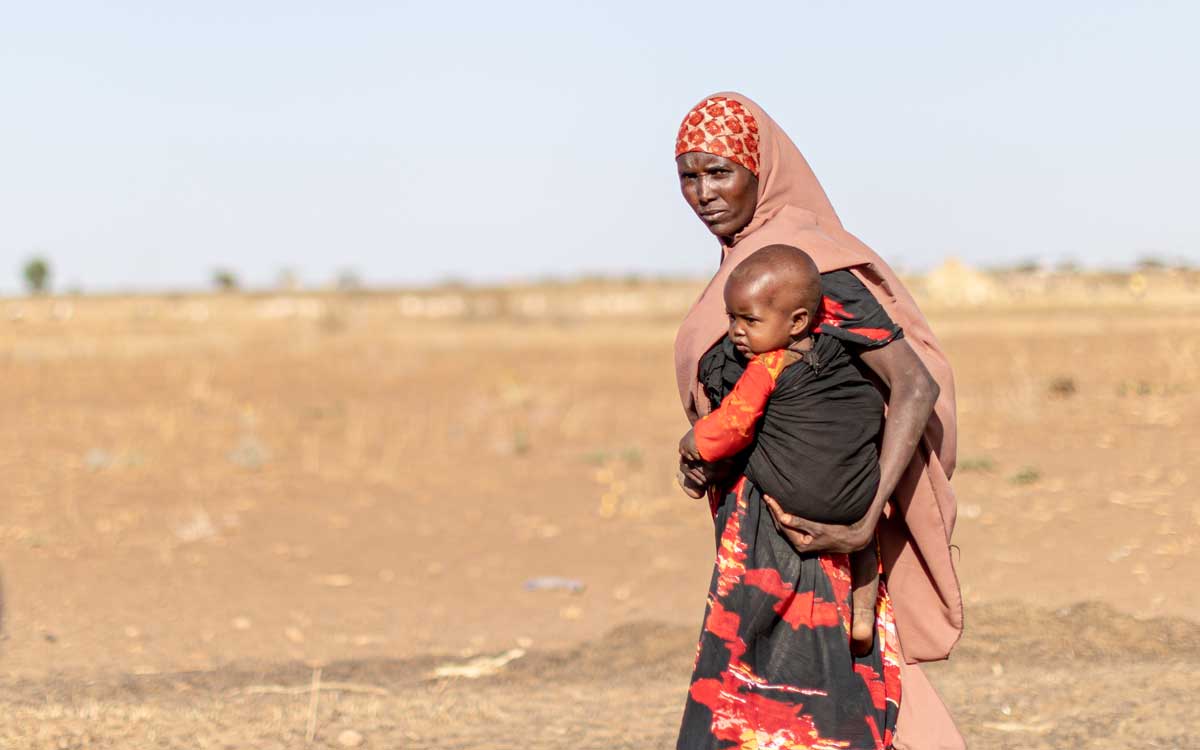
Thousands of families have been displaced due to recent climate change and droughts in Ethiopia's Somali regions. Leaving them without hope. Most families have lost their homes, livestock, and farmland.
Climate change through drought, desertification, the salinization of ground water and soil, and rising sea levels, can contribute to the displacement of people across international frontiers.
Natural disasters can also force people to seek refuge in other countries. Such disasters – floods, earthquakes, hurricanes, mudslides – are increasing in frequency and intensity. While most of the displacement caused by these events is internal, they can also cause people to cross borders. None of the existing international and regional refugee law instruments, however, specifically addresses the plight of such people.
An asylum seeker is someone seeking sanctuary in another country and to be recognized as a refugee, they must demonstrate that their fear of persecution in their home country is well-founded.
Internally displaced people are those who have fled their homes for the same reasons as refugees but remain in their own country and they are not protected by international law.
Three years since Russia’s full-scale invasion of Ukraine, the war continues to inflict untold suffering on the Ukrainian people and has profound global implications.
To mark World Children’s Day, Cine-ONU Vienna screened the documentary “The Nest Away From Home” in cooperation with UNICEF Slovakia – Ukraine Refugee Response at the cinema Top Kino.
To mark World Refugee Day Ciné ONU Vienna screened the film “Refuge” in cooperation with the United Nations High Commissioner for Refugees (UNHCR) Austria. The film tells the story of a leader in a white nationalist hate group who finds healing with the people he once hated: a Muslim heart doctor and his town of refugees.
The Blue Heart Campaign is a global initiative led by the United Nations Office on Drugs and Crime (UNODC) to raise awareness of human trafficking and its impact on people and society.